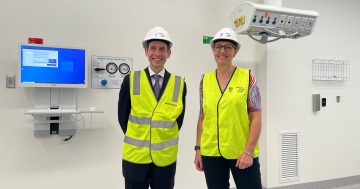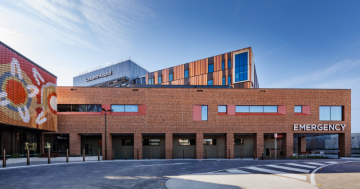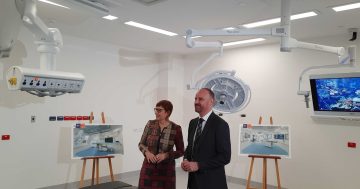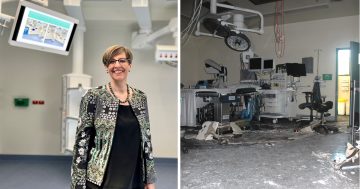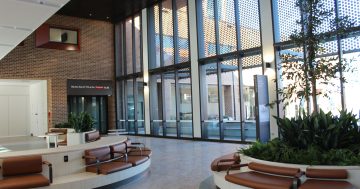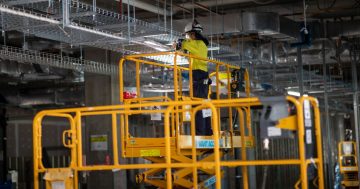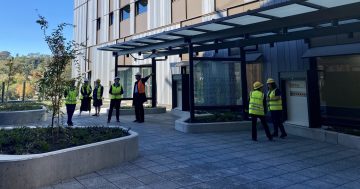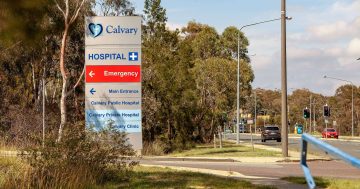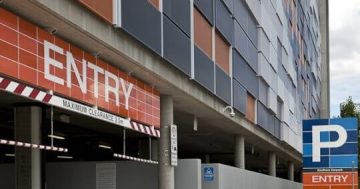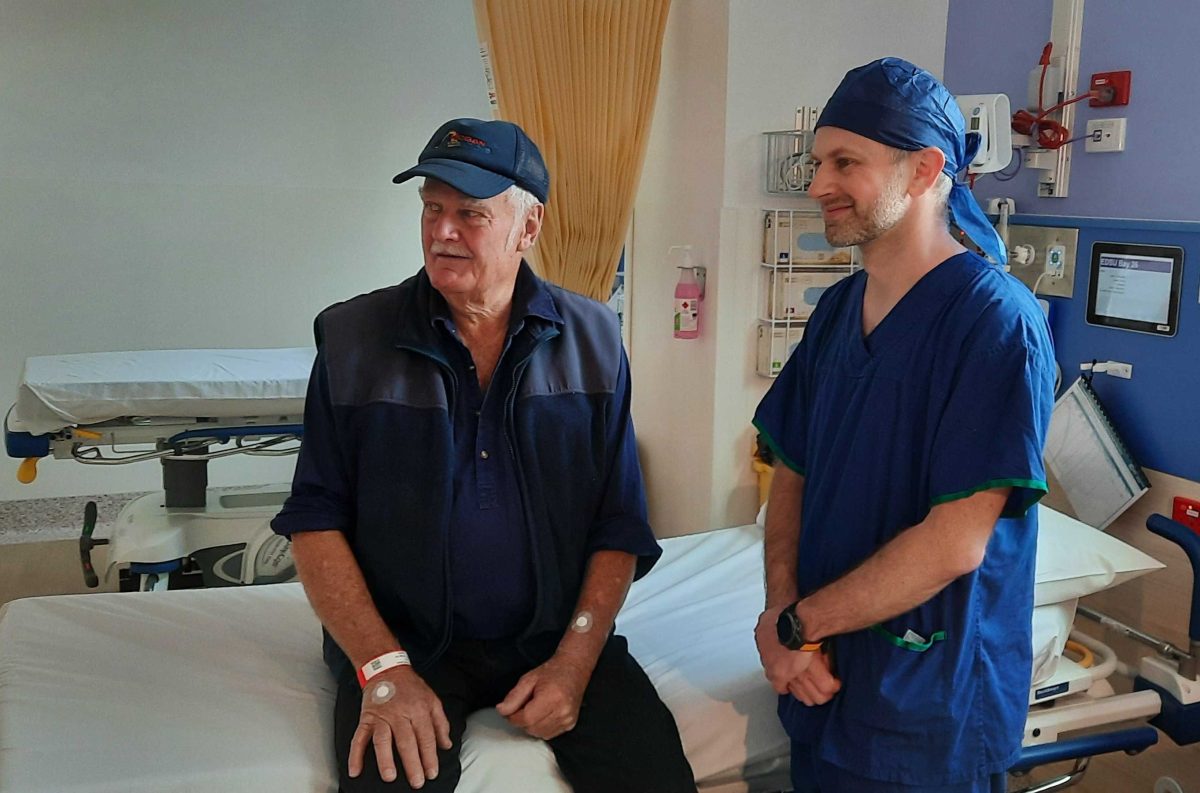
“I’m lucky”: Ken Smith of Moruya and head of vascular surgery Gert Frahm-Jensen. Photo: Ian Bushnell.
Moruya man Ken Smith was one of the first patients to be treated in the new Critical Services Building at Canberra Hospital before the official move at the weekend.
His procedure for an aneurysm allowed one of the new hybrid theatres to be put through its paces last week, and the verdict from his vascular surgeon was a confident thumbs up.
The hybrid theatres have X-ray imaging services, making for safer and more efficient procedures.
TCH head of vascular surgery Gert Frahm-Jensen, who performed the procedure, said the new theatres provide X-ray guidance for procedures in real-time during operations, which allowed surgeons to do work they previously couldn’t and shorten hospital stays for patients.
“It’s really brought us to the forefront of what’s available in terms of surgical and medical technology in Australia,” he said.
Mr Smith was treated for an aneurysm of the aorta, the main artery in the abdomen.
Dr Frahm-Jensen said this involved inserting a stent graft to prevent the weakened section of the artery from ballooning out and bursting.
“So he’s had some new plumbing on the inside to divert blood away from the aneurysm through the aneurysm and then depressurising that aneurysm, which means that now he can go back to normal life without the risk of that bursting at home,” Dr Frahm-Jensen said.
“It’s a procedure that still could have been done in the old theatres, but with radiology in a separate part of the building, there would have been a great risk of complications, so having it up here in the operating theatre where we can deal with any unforeseen complications immediately makes it a lot safer for the patients and easier for us as surgeons.”
Conditions such as blocked arteries used to require two procedures, but in the new facilities, they could be combined.
“We are able to get them out of hospital sooner and avoid bringing them back for a second procedure later on,” Dr Frahm-Jensen said.
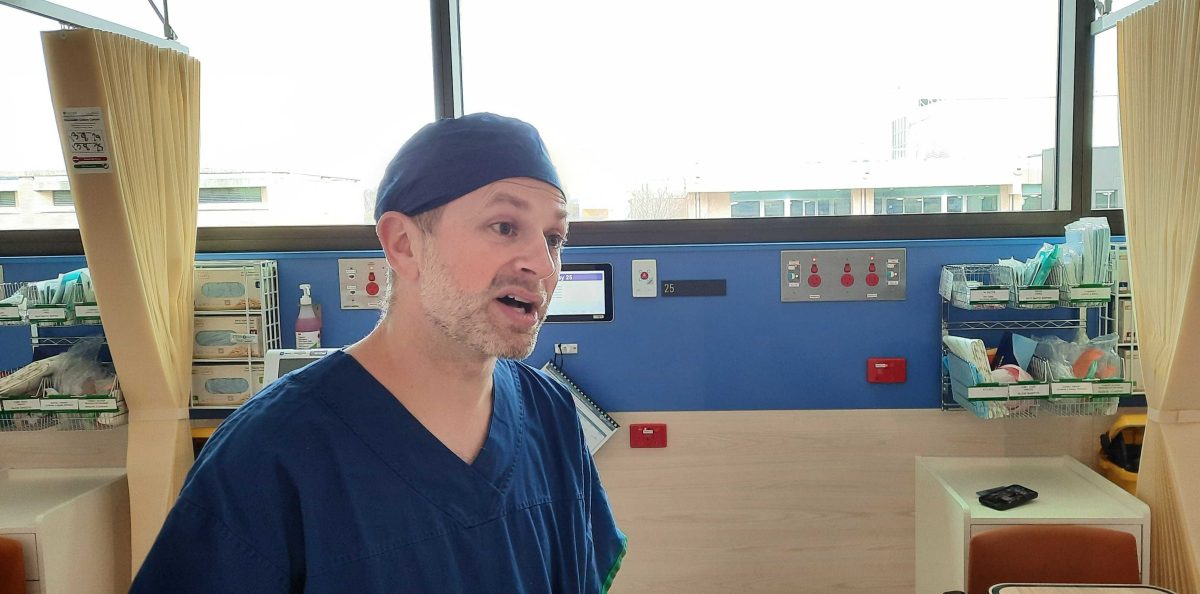
Dr Frahm-Jensen says the new hybrid theatre is a game changer. “It’s really brought us to the forefront of what’s available in terms of surgical and medical technology in Australia.”
He said working in the new theatres was a bit like being a homeowner walking into a new home for the first time.
“It’s fantastic. The equipment that we have is pure state-of-the-art; the imaging quality is outstanding. It’s a bit like going from an old TV to a new 4K TV.
“It’s really a game changer for us and we’re really happy with it.”
It has been a long time coming, a decade or more, and surgeons such as Dr Frahm-Jensen have had a lot of input into the theatre design and fitout.
“We’ve been intimately involved in the design of the hybrid operating theatres and the procurement process as well, ensuring that we had equipment that was exactly what we needed locally,” he said.
For patients, it will mean not having to travel for some procedures, less time in theatre, fewer anaesthesias and easier recoveries.
Hopefully, the new theatres will also help to reduce surgery waiting times.
Mr Smith, 75, is no stranger to Canberra Hospital, having undergone triple bypass surgery about four years ago after having a heart attack.
He had to wait about five weeks for this particular operation, arrived at TCH on Tuesday, had surgery the next day and was discharged on Friday.
“They had someone there who took me where we had to go, and they gave me all the gear to put on, and then they just wheeled me down in the surgery and explained every single thing while I was waiting to go under, and five hours later I was awake,” Mr Smith said.
He feels lucky that he did not have to go to Sydney, and the experience in Canberra was brilliant.
“I’m very lucky. I could have fallen off the perch somewhere,” Mr Smith said.
Canberra Health Services completed its move of services and patients to the new Critical Services Building at the weekend.
It said just over 100 patients moved to the new Intensive Care Unit and other medical and surgical inpatient units in the building.
The new Emergency Department (ED) is now fully operational, and the ED team is settling into the new department and finding new ways of working.
CHS said that some continued disruption across the hospital could be expected as teams become familiar with their new work environments.












